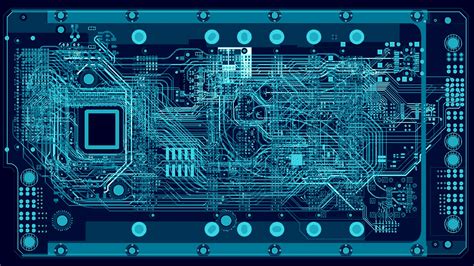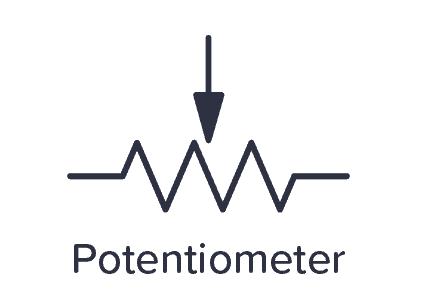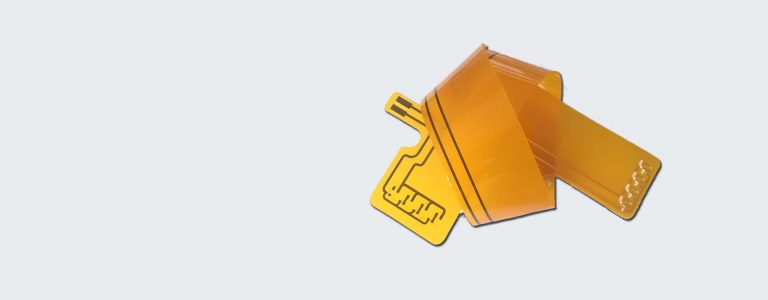Mastering Complex PCB Assembly: Strategies for Success
Key Takeaways
When venturing into complex PCB assembly, it’s crucial to grasp the essentials of PCB design. A solid foundation in this area not only enhances your understanding but also aids in avoiding common pitfalls. Utilizing the right tools and technologies can significantly streamline the PCBA process. For instance, advanced software for layout design can help identify potential errors early on, ultimately saving time and resources. It’s important to be aware of the common challenges faced during the pcb assembly process, such as component misalignment and soldering issues, along with viable solutions to navigate these obstacles effectively. Adopting best practices is essential for maintaining an efficient workflow; this includes establishing clear communication channels among team members and implementing effective project timelines. Quality control is another critical aspect that should not be overlooked; incorporating rigorous testing protocols helps ensure that every assembled board meets industry standards before it reaches the market. By staying informed on future trends in pcb assembly techniques, you can position yourself ahead of the curve, enabling innovative approaches that could change how projects are executed in the long run. Whether you’re a seasoned professional or just starting, focusing on these key areas will elevate your proficiency in complex PCB assembly and enhance your overall project outcomes.
Understanding the Basics of PCB Design
When embarking on the journey of PCB assembly, it is crucial to grasp the foundational principles of PCB design. A well-designed Printed Circuit Board (PCB) is the backbone of efficient and reliable PCBA. This involves not just laying out components correctly but also ensuring that electrical pathways are optimized for performance. The design phase incorporates several critical elements such as layer stacking, trace routing, and component placement. Successfully managing these aspects can significantly reduce the chances of errors during assembly.
Moreover, understanding electrical specifications and mechanical constraints enables designers to create PCBs that not only function optimally but can also endure various environmental conditions. For example, choosing suitable materials with appropriate thermal properties ensures that the pcb assembly can handle heat dissipation effectively, thereby preventing any potential failures.
In addition to technical knowledge, a designer must also be familiar with the various tools available for PCB designs, such as Computer-Aided Design (CAD) software. This technology helps streamline the creation of intricate designs while providing a platform for simulations that predict how a board will perform under real-world conditions.
By thoroughly understanding these basic principles of PCB design, individuals can contribute to more successful and effective PCBA processes, leading to enhanced overall project outcomes and more reliable devices in the marketplace.
Tools and Technologies for Enhanced PCB Assembly
In the realm of PCB assembly, the integration of advanced tools and technologies is crucial for achieving high-quality PCBA. From sophisticated software for design validation to precision machinery used in fabrication, understanding these technologies is fundamental to optimizing production processes. For instance, CAD software allows engineers to create detailed schematics and layouts, which serve as the blueprint for the entire assembly. With features like simulation and design checking, these tools help pinpoint issues early in the design phase, reducing errors during PCB assembly.
Moreover, automated pick-and-place machines have revolutionized the way components are assembled onto PCBs. These machines enhance accuracy and speed while decreasing labor costs. A key benefit is their ability to handle complex layouts with small components, which are increasingly common in modern electronics.
| Technology | Benefits |
|---|---|
| CAD Software | Design validation and error reduction |
| Pick-and-Place Machines | Speed and precision in component placement |
| Reflow Ovens | Uniform heating for soldering |
| 3D Inspection Systems | Quality control through real-time analysis |
In addition to machinery, staying updated with advancements such as automated optical inspection (AOI) can significantly contribute to quality assurance during the PCBA process. AOI systems utilize high-resolution camera technology to detect defects on PCBs early on, ensuring only reliable components proceed through production.
By investing in the right tools and integrating modern technologies into complex PCB assembly workflows, manufacturers can enhance overall efficacy and reliability. This strategic approach not only promotes cost savings but also cultivates a reputation for quality that can set a business apart in a competitive market.
Common Challenges in Complex PCB Assembly and Solutions
In the realm of PCB assembly, various challenges can arise that may hinder the efficiency and precision of the manufacturing process. One prevalent issue is the density of components on modern boards, which can lead to difficulties in soldering and heat dissipation. To mitigate this, utilizing advanced pick-and-place machines equipped with vision systems can significantly enhance positioning accuracy during assembly. Additionally, understanding and correctly applying thermal management strategies becomes essential for successful PCBA.
Another challenge involves ensuring signal integrity amidst multiple layers, which often complicates complex assemblies. Implementing design rules and constraints during the PCB design process can help address potential issues before they escalate. Additionally, employing simulation software allows engineers to predict performance issues related to electromagnetic interference.
Finally, managing supply chain disruptions is critical in today’s fast-paced production environment. Establishing strong relationships with suppliers and adopting just-in-time inventory practices can alleviate potential bottlenecks in component availability. By recognizing these common challenges and implementing strategic solutions, companies can enhance their pcb assembly processes, leading to more reliable outcomes in their projects.
Best Practices for Efficient Workflow in PCB Projects
Achieving an efficient workflow in pcb assembly projects hinges on several best practices that streamline processes and minimize errors. Firstly, adopting a clear and organized pcba project workflow can significantly enhance productivity. This begins with meticulous planning; thoroughly assess project requirements and timelines to allocate resources effectively. Next, employing collaborative tools allows teams to communicate seamlessly, ensuring everyone is aligned with the project goals.
Utilizing advanced tools and technologies in your assembly line can also optimize performance. For instance, implementing automated testing equipment helps detect errors early in the process, reducing the likelihood of costly rework. Additionally, dividing tasks into manageable stages aids in maintaining focus and clarity among team members, thus fostering a more orderly approach to complex projects.
Regular training sessions for staff on the latest techniques are essential; keeping everyone updated enhances skill sets and addresses knowledge gaps that might arise during intricate assemblies. Lastly, establishing a feedback loop within your team encourages continual improvement—a vital component of any successful mission in complex pcb assembly initiatives. By following these best practices, teams can navigate challenges effectively while ensuring high-quality outcomes in their projects.
Quality Control Measures in PCB Manufacturing
In the realm of PCB assembly, maintaining high standards of quality is paramount for ensuring reliable functionality and longevity of the final product. Implementing robust quality control measures throughout the pcba process can significantly reduce defects and enhance overall performance. Key strategies include establishing a rigorous inspection protocol during various assembly stages, where visual checks and automated optical inspections play crucial roles in identifying discrepancies early on. Utilizing advanced testing methods, such as in-circuit testing and functional testing, ensures that each component operates as intended before final assembly. Furthermore, fostering a culture of continuous improvement within the workforce encourages employees to prioritize quality, resulting in fewer errors and more efficient workflow. Tracking data related to defects through statistical process control can provide valuable insights to identify patterns and root causes, making way for targeted corrective actions. With these quality control measures, manufacturers can effectively safeguard against potential failures in complex pcb assembly projects while enhancing customer satisfaction with durable and dependable products.
Future Trends in PCB Assembly Techniques
As the landscape of electronics continues to evolve, the pcb assembly process is rapidly adapting to meet new demands for efficiency and precision. One of the most significant trends is the integration of automation and robotics in the pcba process, which can dramatically reduce production times and minimize human error. Robotics are being employed to handle delicate components, which enhances reliability while maintaining cost-effectiveness. Furthermore, advancements in software tools that facilitate real-time monitoring and control of assembly lines are becoming commonplace, allowing for immediate adjustments that enhance overall efficiency.
Another exciting development is the rise of flexible printed circuit boards (FPCBs), which offer designers greater versatility in their layout options. This trend is particularly beneficial for compact devices where space is at a premium. With FPCBs, manufacturers can create innovative designs while ensuring functionality remains uncompromised.
“Stay ahead by embracing technology that fosters not just speed but also quality in your PCB projects.”
Moreover, 3D printing technology is beginning to play a larger role in prototype manufacturing within the pcb assembly realm. This method provides an opportunity for rapid prototyping and allows engineers to experiment with complex designs without incurring significant costs or delays.
Finally, with growing environmental concerns, sustainable practices are being prioritized in the pcb assembly process. Companies are increasingly sourcing materials from eco-friendly sources and investing in processes that reduce waste and enhance energy efficiency.
In summary, by keeping an eye on these emerging trends—automation, flexible circuit technology, 3D printing, and sustainability—manufacturers can ensure their processes remain efficient while meeting the high standards required in today’s competitive market.
Case Studies: Successful Complex PCB Assembly Projects
Examining successful PCB assembly projects provides invaluable insights into the complexities and best practices of the process. One notable case involves a tech company that designed a highly intricate PCBA for an innovative wearable device. By employing advanced soldering techniques and utilizing automated pick-and-place machines, they achieved impressive efficiency gains while markedly reducing errors. Another exemplary project involved the assembly of a multi-layered PCB for a medical device, which required stringent quality control measures. This project highlighted the importance of early-stage collaboration between design, engineering, and manufacturing teams to address potential challenges proactively. These examples emphasize that thorough planning, selecting appropriate tools, and implementing effective quality checks are critical to mastering the art of complex PCB assembly. Adopting such strategies not only secures reliable outcomes but also optimizes overall workflow in demanding environments.
Conclusion
In conclusion, mastering complex PCB assembly requires a deep understanding of the various components involved in the process. Effective PCB assembly not only enhances the efficiency of production but also minimizes errors that could lead to costly delays. By implementing the aforementioned expert strategies, professionals can enhance their capabilities in PCBA and ensure that projects progress smoothly. The integration of modern tools and technologies plays a crucial role in streamlining workflows, allowing for quicker turnaround times without sacrificing quality. Additionally, staying informed about best practices and emerging trends in PCB assembly can help professionals navigate the complexities of the field more effectively. As the industry continues to evolve, equipping oneself with knowledge about quality control measures is essential for maintaining reliability and precision in outcomes. A proactive approach, combined with a commitment to continual learning, will ultimately lead to success in even the most intricate PCBA projects.
FAQs
What is PCB assembly?
PCB assembly is the process of connecting electronic components to a printed circuit board (PCB) to create a functional electronic circuit. This intricate process often involves techniques such as surface-mount technology (SMT), through-hole, or a combination of both.
What are common challenges faced in complex PCBA?
Some common challenges in complex PCB assembly (PCBA) include component misalignment, thermal issues, and managing intricate circuitry designs. Addressing these challenges often requires careful planning and the use of advanced tools.
What tools can enhance my PCB assembly process?
Utilizing specialized tools such as automated pick-and-place machines, soldering stations, and inspection equipment can significantly enhance the PCB assembly process by improving accuracy and efficiency.
How important are quality control measures in PCBA?
Quality control measures are crucial in PCBA, as they ensure that each component is correctly placed and soldered. Implementing rigorous inspection protocols can identify issues early and reduce the risk of malfunction.
What is the future of PCB assembly techniques?
The future of PCB assembly techniques is leaning towards automation and smart technology integration, enabling faster production speeds while maintaining high precision levels.







